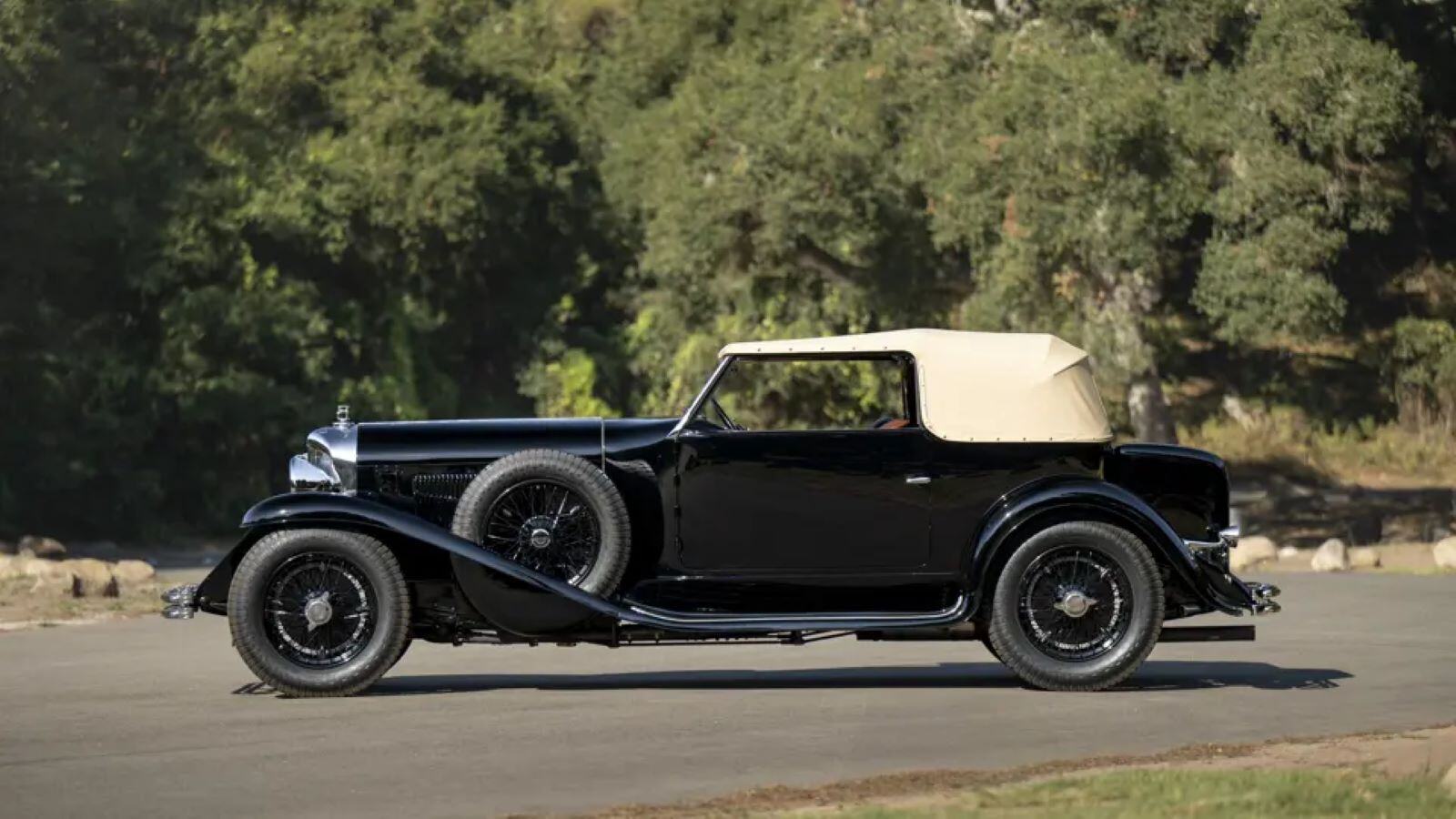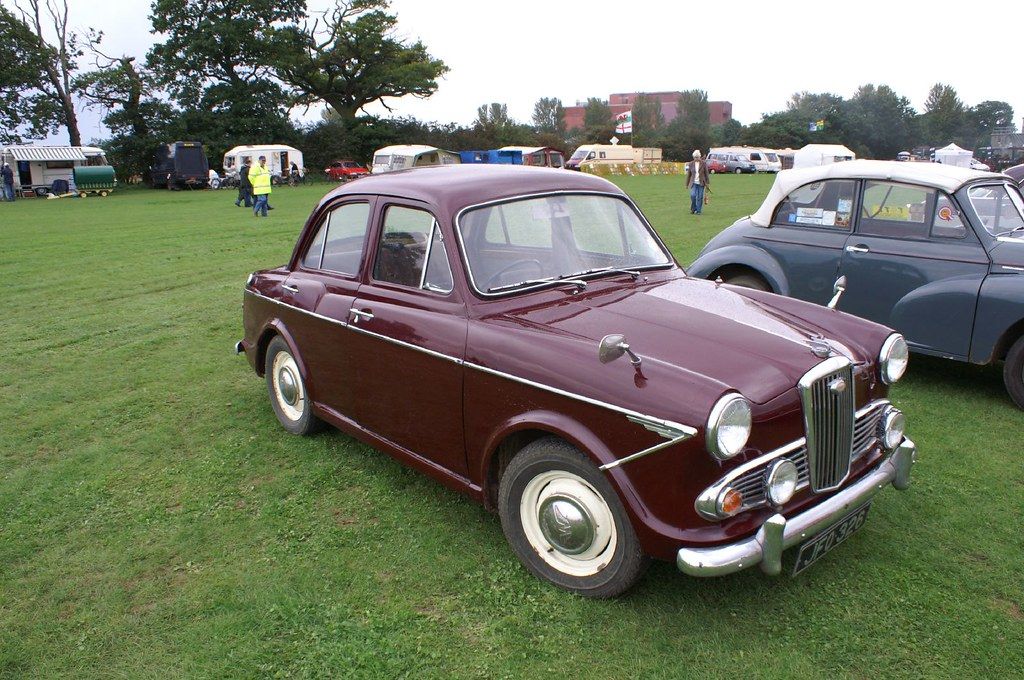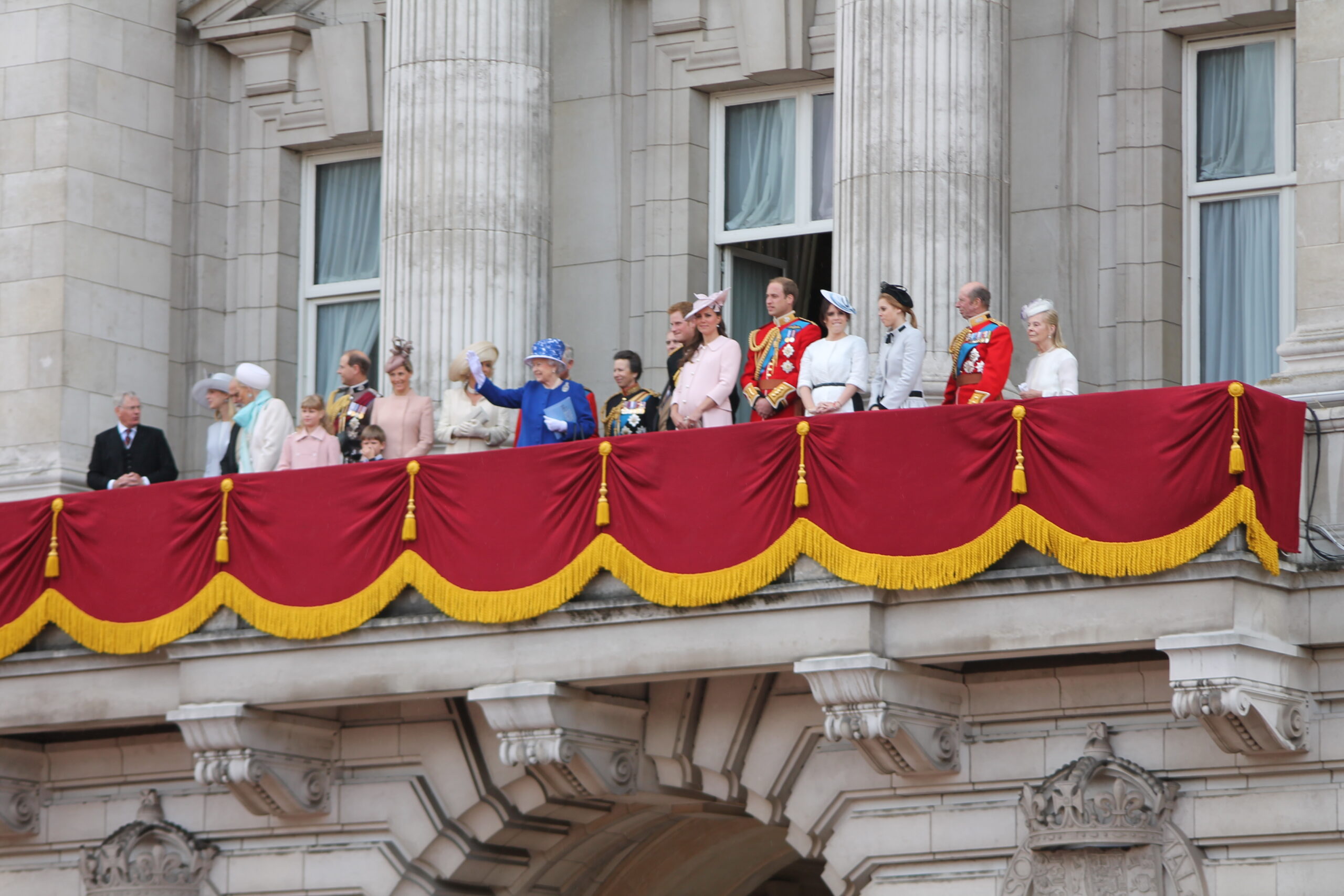
The British Royal Family, synonymous with tradition and grandeur, often conjures images of horse-drawn carriages or opulent state limousines gliding through London’s historic streets. Indeed, for centuries, the monarchy’s preferred mode of transport has been as much a symbol of power and continuity as the crown jewels themselves. Yet, beneath the polished facade of official engagements and ceremonial processions lies a fascinating, surprisingly diverse, and at times wonderfully down-to-earth collection of vehicles that tells a much richer story of royal life and evolving tastes. From bulletproof behemoths to humble hatchbacks, the royal garages are veritable treasure troves for any car enthusiast, bursting with backstories as intriguing as the family members who’ve owned them.
Forget what you think you know about royal rides. While there are certainly plenty of stretched land yachts and bespoke bulletproof cocoons in the royal stable, the true joy for us petrolheads comes from discovering the unexpected. It’s not just about the pomp and circumstance; it’s about the personal preferences, the practical choices, and the sheer love for motoring that has quietly permeated the royal household for over a century. We’re talking about vehicles that have carried future queens, ferried mischievous princes, and even served as the final transport for a Duke with a distinct penchant for British engineering.
What we’re about to dive into isn’t merely a list of expensive cars. This is an intimate journey through the automotive history of one of the world’s most famous families, revealing how their choices, from ultra-rare state vehicles to rugged utilitarian machines, have mirrored both their duties and their deeply personal lives. Get ready to peel back the layers of royal mystique and explore some of the most enduring and, dare we say, ‘simple’ classics that have truly defined the British Royal Family’s unique motoring legacy.
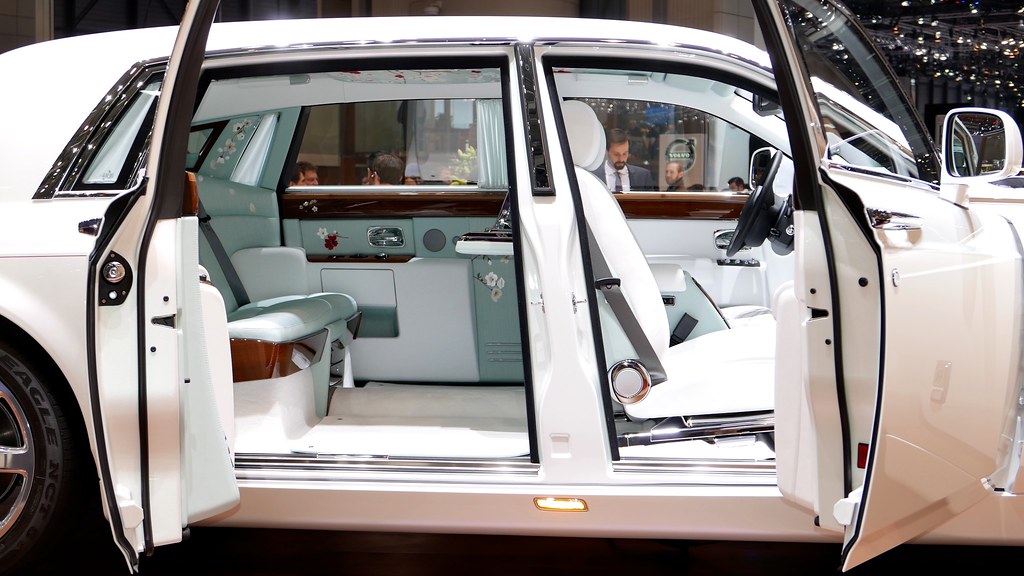
1. **Rolls-Royce Phantom IV**Only 18 of these ultra-exclusive Rolls-Royce Phantom IVs were ever crafted, and the British royals, being British royals, naturally snagged one for their fleet. This wasn’t just any luxury car; it was a statement, delivered to none other than Princess Elizabeth and the Duke of Edinburgh in 1950, a mere two years before she ascended to the throne and became Queen. Talk about arriving in style, and with a premonition of future majesty!
The regal treatment started with its livery: painted in the unmistakable royal claret and black. But it wasn’t just about appearances. This majestic beast was designed with royal duties firmly in mind, featuring a raised roof. This seemingly minor modification wasn’t just for a bit of extra headroom; it was a thoughtful design choice, offering better visibility for the crowds during public appearances, allowing the future Queen to be seen by her subjects.
The Phantom IV remains a towering figure in automotive history, widely regarded as one of the most prestigious vehicles ever created. Its very existence was a testament to its purpose, having been built specifically, and exclusively, for heads of state and royalty. Imagine rolling up to an event in a car so rare and so precisely engineered for your station that only a handful of other world leaders could ever hope to own one. That’s a level of exclusivity that even today’s hypercar market struggles to match. It was more than a car; it was a rolling throne.
Read more about: Bawse-Level Bling: The 10 Most Shocking Custom Paint Jobs in Rick Ross’s Legendary Car Collection
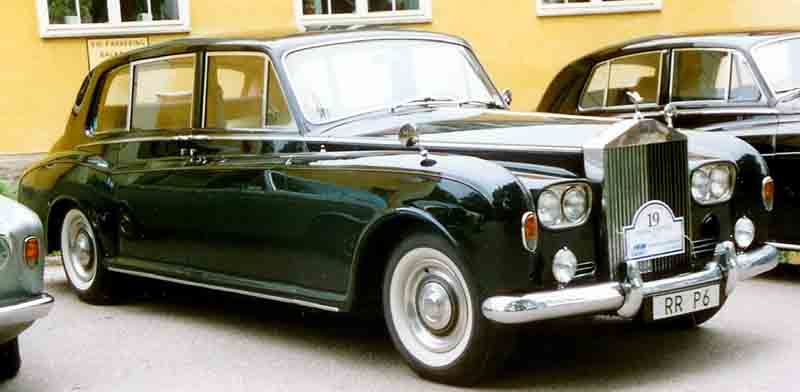
2. **Rolls-Royce Phantom V**Following in the esteemed tire tracks of the Phantom IV, the Rolls-Royce Phantom V joined the royal fleet in 1960 and quickly cemented its place as a workhorse of regal transport. This spectacular specimen wasn’t just a luxurious cruiser; it served for many years as one of the Queen’s primary state cars, ferrying Her Majesty to countless engagements and official ceremonies across the land. It truly embodied the blend of stately presence and unwavering reliability that the monarchy demanded.
What set this Phantom apart from many other royal vehicles were its bespoke interior features. For instance, it boasted a glass partition, creating a distinct separation between the driver and passenger compartments. This wasn’t just a nod to privacy, but a practical consideration for a monarch who often conducted official business or needed a moment of serene contemplation while on the move. It created a private sanctuary on wheels, allowing the Queen to remain composed and focused amidst the often-chaotic demands of public life.
Adding to its unique functionality, a special platform could be raised in the rear of the car. This ingenious modification was specifically designed to enhance the Queen’s visibility during processions, ensuring that well-wishers and onlookers could catch a glimpse of their monarch as she passed by. And in a nod to pure practicality over opulent flash, the interior was upholstered in durable gray cloth rather than the more common, but less comfortable for long hours, leather. When you spend countless hours in a car, comfort and practicality trump ostentatious luxury every single time, even for a Queen.
Car Model Information: 2025 Honda Civic Sport
Name: Rolls-Royce Phantom V
Manufacturer: Rolls-Royce Limited
Production: 1959–1968,518 produced
Designer: John Polwhele Blatchley
Predecessor: Rolls-Royce Phantom IV
BodyStyle: saloon (car)
Successor: Rolls-Royce Phantom VI
Engine: Rolls-Royce V8 engine
Transmission: Automatic transmission
Length: 238 in
Abbr: on
Layout: FR layout
Assembly: Crewe,England
Width: 79 in
Height: 69 in
Weight: 5600 lb
Wheelbase: 145 in
Related: Rolls-Royce Silver Cloud
Sp: uk
Categories: 1960s cars, All Wikipedia articles written in British English, Articles with short description, CS1: long volume value, Cars discontinued in 1968
Summary: The Rolls-Royce Phantom V is a large four-door limousine produced by Rolls-Royce Limited from 1959 to 1968. Based on the Silver Cloud II, it shares a V8 engine and Rolls-Royce Hydramatic automatic gearbox (manufactured under license from General Motors by Rolls-Royce) with that model. Rolls-Royce built the cars’ chassis and drivetrains, with bodies mainly made to standard designs by coachbuilders Park Ward, Mulliner Park Ward and James Young, former vendors absorbed by Rolls-Royce. Other coachbuilders, including Hooper, Henri Chapron and Woodall Nicholson, built one or two bodies each on Phantom V chassis.
The engine is a 6,230 cc 90-degree V8 with twin SU carburettors, coupled to a 4-speed automatic transmission. The car has massive drum brakes and a wheelbase of 3,683 mm. Power assisted steering was standard.
A low final drive ratio allowed a walking speed which was suitable for ceremonies.From 1963 onward, the Silver Cloud III’s 7% more powerful engine and new front wings (incorporating the latter’s quad headlamps) were fitted.
Get more information about: Rolls-Royce Phantom V
Buying a high-performing used car >>>
Brand: Rolls-Royce Model: Phantom V
Price: $26,923 Mileage: 1,460 mi.
Read more about: Bawse-Level Bling: The 10 Most Shocking Custom Paint Jobs in Rick Ross’s Legendary Car Collection

3. **Bentley State Limousine**When it comes to cars truly “Fit for a Queen,” the Bentley State Limousine takes the crown—literally. Commissioned specifically for Her Majesty’s Golden Jubilee in 2002, this isn’t just a car; it’s a bespoke automotive masterpiece, and remarkably, only two of these magnificent machines exist in the entire world. Imagine the level of exclusivity! These aren’t just off-the-shelf luxury vehicles; they are rolling fortresses, designed from the ground up to meet the unparalleled security and ceremonial demands of the British monarch.
These limousines aren’t merely opulent; they’re armored to the teeth. Equipped to withstand explosions and featuring special airtight cabins to protect against gas attacks, they represent the absolute pinnacle of discreet security technology. It’s a fascinating juxtaposition: immense luxury and bespoke craftsmanship woven seamlessly with capabilities worthy of a military vehicle. The level of engineering and dedication to ensuring the Queen’s safety while maintaining an air of elegant composure is truly astounding.
But beyond the high-tech security, thoughtful design touches abound, tailored precisely for the Queen’s needs. The rear doors, for instance, are hinged at the back, allowing Her Majesty to stand up straight and gracefully before exiting the vehicle. This wasn’t just a convenience; it was a vital detail for a monarch who had perfected the royal wave, ensuring she could present herself with dignity and ease to waiting crowds. These Bentleys weren’t just transport; they were stages for an ongoing performance of royalty.
Car Model Information: 2025 Honda Civic Sport
Name: Bentley State Limousine
Caption: Edward Seago
Manufacturer: Bentley
Production: 2002,2 produced
Assembly: Crewe
Class: Full-size car,luxury car,Limousine,Official state car
BodyStyle: Landaulet (car),Sedan (automobile)
Length: 6220 mm
Abbr: on
Width: 2000 mm
Height: 1770 mm
Wheelbase: 3844 mm
Engine: Rolls-Royce–Bentley L-series V8 engine
Transmission: GM 4L80-E transmission,automatic transmission
Layout: FR layout
Doors: Suicide door
Categories: All Wikipedia articles written in British English, All articles with dead YouTube links, All articles with unsourced statements, Articles with dead YouTube links from February 2022, Articles with short description
Summary: The Bentley State Limousines are official state cars manufactured by Bentley as a gift for the late Queen Elizabeth II on the occasion of her Golden Jubilee in 2002. The two cars produced were in service for the Queen up until her death in 2022. They have most recently been in service for King Charles III. The Princess Royal used the car while accompanying the Queen’s coffin. Both cars are kept in the Royal Mews.
Get more information about: Bentley State Limousine
Buying a high-performing used car >>>
Brand: Bentley Model: State Limousine
Price: $26,923 Mileage: 1,460 mi.
Read more about: 15 Vehicles Millennials Are Steering Clear Of: Unpacking the Generational Divide in Automotive Appreciation
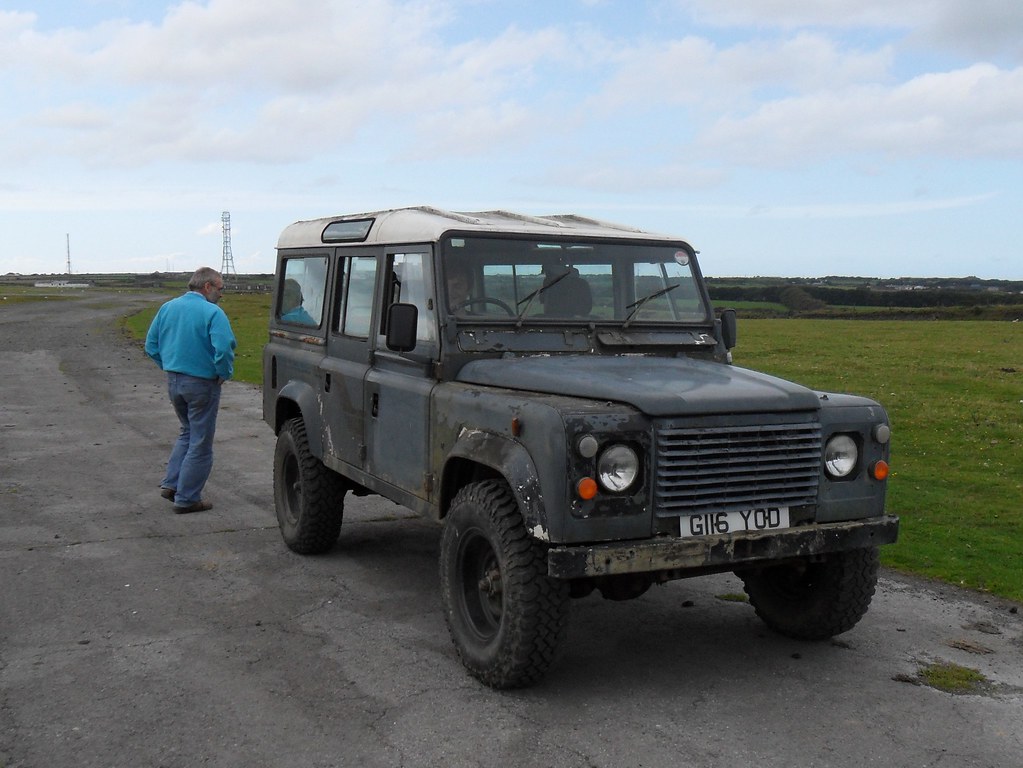
4. **Land Rover Defender**Now, let’s pivot from the grand state limousines to a vehicle that, in many ways, represents the practical, rugged, and deeply personal side of royal motoring: the Land Rover Defender. This British icon, known for its go-anywhere capability and no-nonsense demeanor, held a special place in the heart of Prince Philip, the Duke of Edinburgh. He was frequently spotted behind the wheel of his beloved green Defender, particularly when navigating the sprawling, often muddy, grounds of the royal estates.
The Duke’s affection for these British workhorses ran so incredibly deep that he made a rather poignant and remarkable request: he wanted a custom-built Defender to carry his coffin at his funeral. This wasn’t a last-minute decision; he spent 16 years meticulously working on this specific vehicle, ensuring it was just right for his final journey. It speaks volumes about his character and his genuine respect for these utilitarian machines, choosing a rugged Land Rover over a traditional hearse. Land Rover, recognizing the significance, provided the family with three, just in case.
Indeed, the royal family maintains several Defenders for practical use around their various country properties. These aren’t show ponies; they are true workhorses, tackling muddy fields, rough terrain, and all the challenges that come with managing vast estates with ease. They embody a practical, hands-on approach to royal life, perfect for country pursuits like inspecting lands or carriage driving, demonstrating that even royalty appreciates a vehicle that can get the job done, no matter how dirty.
Read more about: Beyond Mr. Bean: An Exclusive Look Inside Rowan Atkinson’s Storied Garage, Home to McLarens, Bespoke Rolls-Royces, and Racetrack Legends
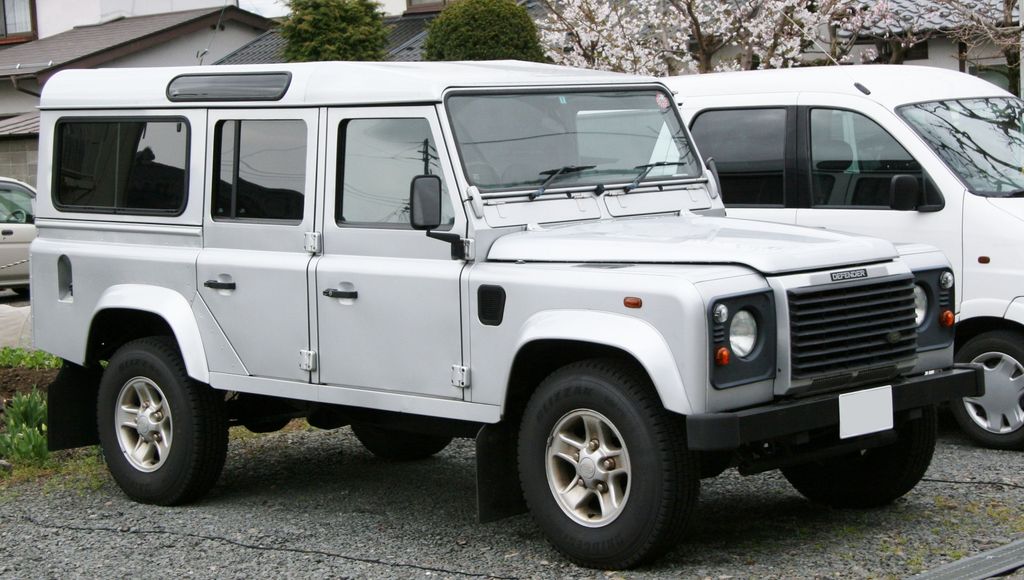
5. **Land Rover Series I**To understand the enduring royal affection for Land Rovers, we have to go back to where it all began: the Land Rover Series I. This wasn’t just a vehicle; it was the starting point for royal off-roading, and it introduced the Queen herself to the joys of rugged, utilitarian transport. Her Majesty received her first Land Rover as a gift shortly after her coronation in 1953, and from that moment, she swiftly developed a profound fondness for these quintessentially British machines.
The Queen wasn’t a stranger to getting behind the wheel of a tough vehicle. Famously, she learned to drive in the military during World War II, acquiring valuable mechanical skills and the confidence to handle even the most demanding machinery. These wartime experiences undoubtedly contributed to her comfort and capability with the Series I, a far cry from the chauffeured elegance of her state cars. It speaks volumes about her practical nature and her willingness to get stuck in.
The royal Series I, while still very much a utilitarian machine, did feature some modest, yet distinctly royal, upgrades. These included a slightly more comfortable interior, a subtle enhancement for the monarch, and crucially, a mounting point for the royal standard flag. This blend of rugged functionality with a touch of regal personalization perfectly encapsulates the early days of royal motoring. Even in her 90s, the Queen was occasionally spotted driving Land Rovers around her estates, a testament to her lifelong bond with these iconic vehicles.
Car Model Information: 2025 Honda Civic Sport
Caption: The first pre production Land Rover R01
Name: Land Rover series
Manufacturer: ubl
Successor: Land Rover Defender
Class: Off-road vehicle
Production: 1948–1985
Assembly: Solihull,England
Layout: Front engine, rear-wheel-drive layout
Categories: 1950s cars, 1960s cars, 1970s cars, 1980s cars, All-wheel-drive vehicles
Summary: The Land Rover Series I, II, and III , or simply the Land-Rover (commonly referred to as Series Land Rovers, to distinguish them from later models) are compact British off-road vehicles, produced by the Rover Company since 1948, and later by British Leyland. Inspired by the World War II jeep, it was the first mass-produced civilian four-wheel drive car with doors, and an available hard roof. Unlike conventional cars and trucks of the time, it used a sturdy fully box-welded frame. Furthermore, due to post-war steel shortage, and aluminium surplus, Land Rovers received non-rusting aluminium alloy bodies, favouring their longevity. In 1992, Land Rover claimed that 70% of all the vehicles they had built were still in use.
Most Series models feature leaf-spring suspension with selectable two or four-wheel drive (4WD), however Series I’s produced between 1948 and mid-1951 had constant 4WD via a freewheel mechanism, and the Stage 1 V8 version of the Series III featured permanent 4WD. All three models could be started with a front hand crank and had the option of front & rear power takeoffs for accessories.
After adding a long wheelbase model in 1954, Land Rover also offered the world’s first four / five door, 4WD off-road station wagon in 1956. Series Land Rovers and Defenders continually excelled in space utilization, offering (optional) three abreast seating in the seating rows with doors, and troop seating in the rear, resulting in up to seven seats in the SWB, and up to ten seats in the LWB models, exceeding the capacity of most minivans, when comparing vehicles of the same length.
Get more information about: Land Rover series
Buying a high-performing used car >>>
Brand: Land Rover Model: Series I
Price: $26,923 Mileage: 1,460 mi.
Read more about: Arnold Schwarzenegger’s Unstoppable Lineup: Exploring the Icon’s Legacy of Power and Enduring Might

6. **Daimler DS420 Limousine**Before the age of Bentleys and Rolls-Royces completely dominated the state car scene, the Daimler DS420 Limousine held a significant place in formal royal transportation for decades, embodying British dignity and stately presence. These elegant, large-bodied limousines were a common sight, serving as official state cars and carrying an impressive roster of passengers, from visiting dignitaries to royal brides, marking countless historic moments.
The royal fleet included several of these impressive DS420s, each benefiting from special modifications tailored for their esteemed occupants and ceremonial roles. These bespoke alterations included raised roofs, providing enhanced visibility for the public during parades and processions, much like the later Rolls-Royces. They also featured specialized communication equipment, ensuring seamless coordination and security for their precious cargo.
Perhaps one of the most iconic moments for a Daimler DS420 was its role in the wedding of the century. Princess Diana famously arrived at St. Paul’s Cathedral in one for her marriage to Prince Charles in 1981, making it a lasting symbol of royal romance and grand occasions. These elegant vehicles, with their distinctive coachwork and dignified aura, remained in continuous royal service from the 1960s well into the early 2000s, a testament to their enduring quality and suitability for the highest levels of state occasion.
Car Model Information: 2025 Honda Civic Sport
Name: Daimler DS420
Aka: Daimler Limousine
Caption: Lincoln, England
Manufacturer: Daimler Company
Production: 1968–1992,4,141 (limousines),& 903 (chassis only)
Class: Luxury car
BodyStyle: Limousine
Engine: Jaguar (car),Jaguar XK6 engine,straight-6
Transmission: General Motors,Turbo-Hydramatic#Super Turbine 400 / THM400 / THM375 / 3L80 / 3L80HD
Length: 574 cm (226 inches)
Width: 197 cm (77.56 inches)
Height: 161 cm (63.39 inches)
Weight: 2133 kg (4702 pounds)
Wheelbase: 358 cm (141 in)
Related: Jaguar Mark X
Predecessor: Daimler DR450
Successor: None
Sp: uk
Assembly: Kingsbury, London,England
Categories: 1970s cars, 1980s cars, All Wikipedia articles written in British English, All articles needing additional references, All articles with unsourced statements
Summary: The Daimler DS420, also known as the Daimler Limousine, is a limousine made by the Daimler Company between 1968 and 1992. The car was designed for official use and it was popular with chauffeur services, hoteliers and undertakers. It was used as an official state car in many countries. No other limousine model has been delivered to more reigning monarchs than the DS420, and the car is still used by the royal houses of the United Kingdom, Sweden, Denmark, and Luxembourg.
Get more information about: Daimler DS420
Buying a high-performing used car >>>
Brand: Daimler Model: DS420 Limousine
Price: $26,923 Mileage: 1,460 mi.
Read more about: Why We Still Adore Them: A Deep Dive into the Most Gloriously Awkward ’80s Cars That Were So Ugly, They Became Icons

7. **Daimler Double Six**While the DS420 epitomized formal state transport, the Daimler Double Six offered a more personal, yet equally refined, motoring experience for Her Majesty Queen Elizabeth II. This particular model held a special place in the Queen’s affections, serving as her personal favorite for many years. She owned several of these distinguished British luxury sedans and was frequently photographed doing something quite remarkable for a monarch: driving them herself around the private grounds of Windsor and Sandringham.
The Double Six wasn’t just another luxury car; it was powered by a silky-smooth V12 engine, delivering effortless power with an aristocratic restraint that perfectly suited the Queen’s style. This provided a driving experience that was both powerful and supremely comfortable, allowing her to navigate her estates with ease and enjoyment. It was a true driver’s car, albeit one cloaked in dignified elegance rather than overt sportiness.
Her Majesty’s models typically featured custom dark green paint, a classic and understated British color, and were equipped with special security communications equipment, even for personal use. Crucially, unlike her official state cars where a chauffeur was mandatory, these personal Daimler Double Sixes allowed the Queen the simple pleasure of driving herself, providing a cherished sense of freedom and a connection to the road that even a monarch could appreciate. It was a rare glimpse into her personal life, where practicality and personal preference sometimes took precedence over rigid protocol.
Car Model Information: 2025 Honda Civic Sport
Categories: All Wikipedia articles written in British English, All set index articles, Articles with short description, Daimler engines, Daimler vehicles
Summary: Daimler Double-Six may refer to either of two different series of Daimler V12 engines or to a car produced by Jaguar Cars under the Daimler nameplate.
Get more information about: Daimler Double-Six
Buying a high-performing used car >>>
Brand: Daimler Model: Double Six
Price: $26,923 Mileage: 1,460 mi.
Read more about: Buyer Beware: 15 Sedans That Won’t Make it to 80,000 Miles Without Costly Repairs
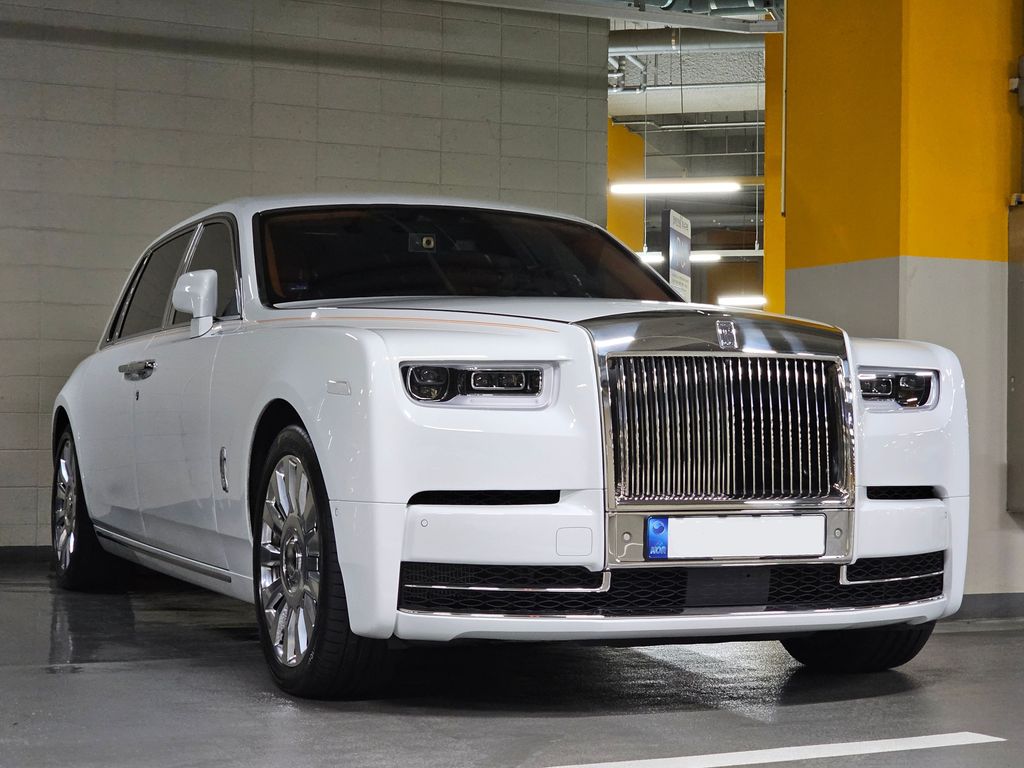
8. **Rolls-Royce Phantom VI**When you talk about a car gifted to a monarch for a monumental occasion, you’re already in rarefied air. But when that car is a Rolls-Royce Phantom VI, presented to Queen Elizabeth II for her Silver Jubilee in 1977 by the Society of Motor Manufacturers and Traders, you know it’s a vehicle imbued with profound historical significance. This magnificent machine wasn’t just a luxurious carriage; it became a veritable stage on wheels, transporting countless dignitaries and cementing its place as an integral part of royal pomp and circumstance, truly a testament to enduring British automotive prowess.
Perhaps its most famous moment, one that burned it into the collective consciousness of a generation, came in 2011. It was this very Phantom VI that gracefully delivered Kate Middleton to Westminster Abbey for her wedding to Prince William. Imagine the hushed anticipation, the roar of the crowd, and then this iconic Rolls-Royce gliding into view, carrying a future Queen to her destiny. It’s the kind of automotive cameo few vehicles, no matter how exclusive, can ever hope to achieve.
From a design perspective, this Phantom VI was unmistakably tailored for its regal purpose. It boasted a prominently raised roof and generously proportioned windows, pragmatic choices that weren’t about ostentatious extravagance but about ensuring maximum visibility. These thoughtful features allowed well-wishers and subjects to catch a clear glimpse of their monarch, or a radiant bride, during those crucial public appearances, ensuring every gaze could connect.
Adding to its bespoke nature, and making it truly unique amongst the world’s most luxurious cars, a special “royal mascot” adorned the hood, subtly replacing the traditional Spirit of Ecstasy ornament. This bespoke emblem served as a distinct yet powerful declaration of its owner’s unique status, truly marking it as a monarch’s personal conveyance. These are the thoughtful, purpose-driven details that elevate these vehicles beyond mere transportation into rolling symbols of British heritage.
Car Model Information: 2025 Honda Civic Sport
Name: Rolls-Royce Phantom VI
Manufacturer: Rolls-Royce Limited
Production: 1968–1990,374 produced
Assembly: West Sussex,England
BodyStyle: Limousine
Related: Rolls-Royce Silver Shadow
Layout: FR layout
Engine: Rolls-Royce V8 engine,Rolls-Royce V8 engine
Wheelbase: 145 in
Abbr: on (approx.)
Length: 238 in
Width: 79 in
Height: 69 in
Weight: 2.5 t
Predecessor: Rolls-Royce Phantom V
Successor: Rolls-Royce Silver Spirit#Touring limousines
Caption: House of Bolkiah
Categories: 1970s cars, 1980s cars, 1990s cars, All articles needing additional references, All articles with unsourced statements
Summary: The Rolls-Royce Phantom VI is a British limousine made from 1968 to 1990 by Rolls-Royce. A total of 374 Phantom VIs were made, of which fewer than 40 were manufactured in the last decade of production.
The exterior is almost identical to the facelifted Phantom V.
Get more information about: Rolls-Royce Phantom VI
Buying a high-performing used car >>>
Brand: Rolls-Royce Model: Phantom VI
Price: $26,923 Mileage: 1,460 mi.
Read more about: Bawse-Level Bling: The 10 Most Shocking Custom Paint Jobs in Rick Ross’s Legendary Car Collection

9. **Bentley Arnage**Before the arrival of those unparalleled custom creations known as the State Limousines, Her Majesty often opted for another stately British saloon: the Bentley Arnage. This wasn’t merely a luxury sedan; it was a vehicle meticulously modified to meet the unique blend of security and decorum so crucial for a reigning sovereign. It perfectly bridged the gap between everyday luxury and the demanding, high-stakes world of royal engagements, providing a robust yet elegant solution.
The Queen’s Arnage was, by no stretch of the imagination, a standard model. It featured thoroughly armored bodywork, transforming an already powerful executive car into a discreet fortress on wheels. Adding another layer of readiness, it was equipped with blue police lights, a clear and unmistakable indication that this was no ordinary VIP transport. This blend of overt authority and understated elegance made it a truly fascinating piece of royal motoring history.
Underneath its regal, yet subtly menacing, exterior, the Arnage R packed a serious punch. It was powered by a formidable 6.75-liter V8 engine, producing a robust 400 horsepower. This wasn’t about winning drag races, but rather about ensuring smooth, authoritative acceleration and the capability to maintain dignified composure under any circumstance. It’s that kind of effortless power delivery that truly defines top-tier luxury, especially when lives are on the line.
Inside, the meticulous attention to royal detail continued. The Arnage featured custom rear seats, complete with extra padding for enhanced comfort during long journeys across the realm. Furthermore, specially designed grab handles were also subtly incorporated, assisting Her Majesty with her graceful ingress and egress from the vehicle. These weren’t just luxurious touches; they’re testaments to the painstaking effort involved in tailoring even a high-end production car to the specific needs of a monarch.
Car Model Information: 2006 Bentley Arnage R
Name: Bentley Arnage
Manufacturer: Bentley Motors
Designer: Steve Harper (designer)
Production: 1998–2009
Assembly: Crewe, Cheshire,England
Predecessor: Bentley Brooklands,Bentley Turbo RT
Successor: Bentley Mulsanne (2010)
Class: Full-size,luxury car
BodyStyle: sedan (automobile)
Layout: Front-engine, rear-wheel-drive layout
Engine: ubl
Transmission: GM 4L80-E transmission,ZF 5HP30 transmission,ZF 6HP26 transmission
Wheelbase: {{convert,3116,mm,in,1,abbr=on
Length: {{convert,5394,mm,in,1,abbr=on
Width: {{convert,1932,mm,in,1,abbr=on
Abbr: on
Height: {{convert,1516,mm,in,1,abbr=on
Weight: Green Label: {{convert,5120,lb,abbr=on,order=flip
Order: flip
Related: Rolls-Royce Silver Seraph,Bentley Azure#Second generation (2006–2009),Bentley Brooklands Coupé,Bentley State Limousine
Sp: uk
Caption: Bentley Arnage R (facelift)
ModelYears: 1999–2009
Categories: 2000s cars, All Wikipedia articles written in British English, Articles with short description, Bentley vehicles, CS1 maint: archived copy as title
Summary: The Bentley Arnage is a full-size luxury car manufactured by Bentley Motors in Crewe, England, from 1998 to 2009. The Arnage and its Rolls-Royce-branded sibling, the Silver Seraph, were introduced in the spring of 1998. They were the first entirely new designs for the two marques since 1980.
In September 2008, Bentley announced that production of the model would end during 2009. A replacement model, the Bentley Mulsanne was launched in August 2009 at the Pebble Beach Concours d’Elegance.
Get more information about: Bentley Arnage
Buying a high-performing used car >>>
Brand: Bentley Model: Arnage
Price: Not Priced Mileage: 25,276 mi.
Read more about: Beyond the Ring: An Exclusive Deep Dive into Floyd Mayweather’s Multi-Million Dollar Automotive Sanctuary
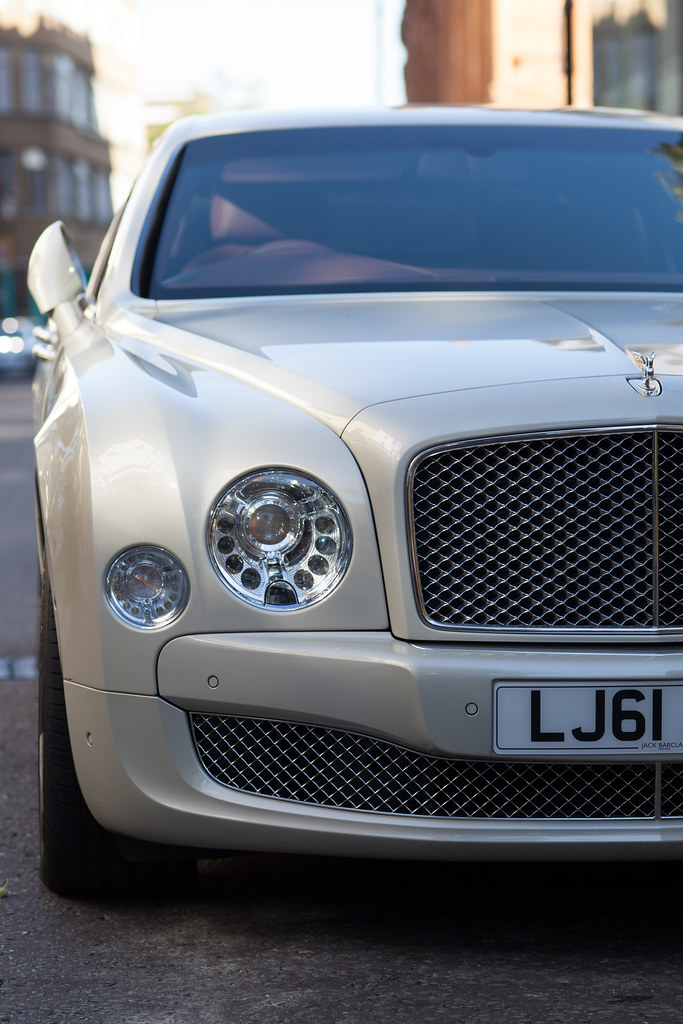
10. **Bentley Mulsanne**Stepping further into the modern era of royal Bentleys, we encounter the magnificent Mulsanne, a machine that absolutely screams stately power fused with quintessential British craftsmanship. The Queen’s Mulsanne, much like its esteemed predecessors, was anything but standard issue; it arrived with its own comprehensive suite of unique modifications, including thoroughly armored bodywork and highly specialized communication equipment. This ensured both her unparalleled safety and seamless connectivity during her extensive royal duties.
Powering this imposing, hand-crafted sedan was a phenomenal 6.75-liter twin-turbo V8 engine, unleashing a formidable 505 horsepower. This isn’t merely about raw grunt; it’s about delivering that power with an almost imperceptible smoothness, an aristocratic restraint that is the undeniable hallmark of Bentley engineering. For a vehicle tasked with transporting the Head of State, having ample, yet supremely refined, power is a crucial factor.
The Mulsanne itself is widely considered a testament to the disappearing art of automotive artistry, a fact amplified exponentially in its royal incarnation. Each Mulsanne, hand-built at Bentley’s storied Crewe factory, demands an astounding commitment of over 400 hours of meticulous craftsmanship. It’s an investment of time and unparalleled skill that few other manufacturers can claim to match, resulting in an interior environment that is nothing short of breathtaking in its execution.
For the Queen’s personal comfort and aesthetic preferences, the royal version of the Mulsanne featured sumptuous leather seats, upholstered in her clearly preferred shade of beige, exquisitely complemented by rich walnut veneer trim throughout the cabin. These are the kinds of precise, personal details that transform a luxurious car into a truly bespoke sanctuary. It’s a masterful blend of formidable capability and unparalleled indulgence.
Car Model Information: 2014 Bentley Mulsanne Base 4dr Sedan
Name: Bentley Mulsanne
Manufacturer: Bentley Motors
Production: March 2010 – June 2020
ModelYears: 2011–2020
Assembly: Crewe
Designer: Dirk van Braeckel
Class: Full-size,luxury car
BodyStyle: Sedan (automobile)
Layout: Front-engine, rear-wheel-drive layout
Engine: twin-turbocharged,Rolls-Royce–Bentley L-series V8 engine
Transmission: ZF 8HP
Wheelbase: 3266 mm
Abbr: on (EWB)
Length: 5575 mm
Width: Convert
Height: 1521 mm
Weight: cvt,convert
Predecessor: Bentley Arnage
Sp: uk
Categories: All Wikipedia articles written in British English, Articles with short description, Bentley vehicles, CS1 errors: bare URL, CS1 errors: missing title
Summary: The Bentley Mulsanne is a full-size luxury car that was manufactured and marketed by British automaker Bentley Motors from March 2010 to June 2020. It served as the flagship automobile for the company during its production run. Honorifically, the Mulsanne was referred to as “The Grand Bentley” during its development.
Replacing the Rolls-Royce-based Arnage, the Mulsanne was Bentley’s first independently-built automobile since the 8 Litre, which W. O. Bentley conceived. Unveiled initially at the Pebble Beach Concours d’Elegance, the Mulsanne retained two key elements from the Arnage—rear-wheel drive with the front axle centerline optimally positioned forward, and a 6.75-litre push-rod V8 engine equipped with twin-turbochargers. The individualistic headlamps were designed to resemble those of the Jaguar S-Type from the 1960s. Throughout its ten-year manufacturing period, Bentley produced approximately 7,900 examples at the Crewe facility. The Mulsanne has generally been well received, with Jeremy Clarkson claiming that the ride is quiet and the torques were great while criticising the number of switches and the fact that it was less “tasteful” than a Rolls-Royce Ghost.
In 2005, development work on the Mulsanne officially commenced under the codename “Project Kimberley”, the name of which was inspired by the Kimberley diamond originating from South Africa. Styled by Belgian automobile designer Dirk van Braeckel, the Mulsanne is a four-door sedan which was offered in two body lengths: short- and extended-wheelbase. Incorporating various internal and external elements from the Arnage, it employs a blend of high-strength steel and lightweight aluminium. The team that assembles the Mulsanne is composed of 298 Bentley employees. The interior was designed under the direction of British automobile designer Robin Page, who also led that of the second-generation Continental GT. Each individual unit undergoes a meticulous process that takes 400 hours (2 weeks), of which 136 hours (five days) are dedicated to interior trimming.
Production of the Mulsanne concluded on 25 June 2020, signifying not only the end of its ten-year manufacture but also the end of Bentley’s 6¾-litre engine after a consecutive 61-year production period. The 6¾-litre V8 engine, introduced in 1959 and heavily revised and updated in 2010, could not be updated any further to meet the increasingly stringent emission regulations, namely CO2 emissions. No replacement for either Mulsanne or 6¾-litre V8 engine is planned. Instead, the third generation Flying Spur would succeed the Mulsanne as Bentley’s flagship model.
Get more information about: Bentley Mulsanne (2010)
Buying a high-performing used car >>>
Brand: Bentley Model: Mulsanne
Price: $69,888 Mileage: 34,157 mi.
Read more about: Beyond Mr. Bean: An Exclusive Look Inside Rowan Atkinson’s Storied Garage, Home to McLarens, Bespoke Rolls-Royces, and Racetrack Legends
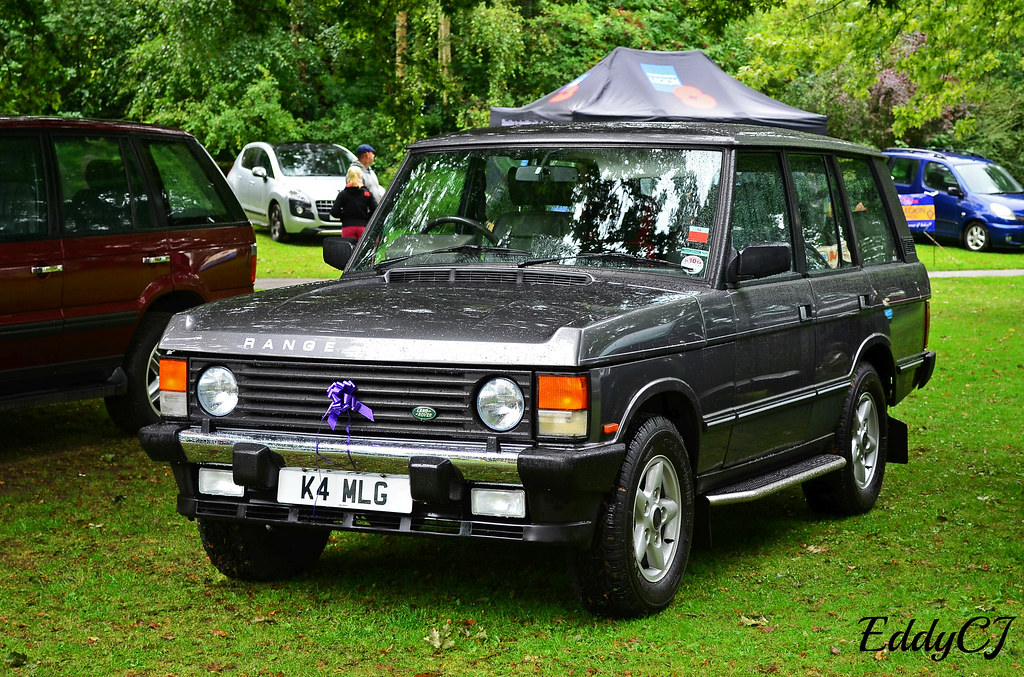
11. **Range Rover LWB Landaulet**If you’re looking for a royal ride designed specifically to offer both uncompromising security and maximum public interaction, then the Range Rover LWB Landaulet is truly in a league of its own. This isn’t just a stretched SUV; it’s a brilliantly engineered ceremonial vehicle, featuring a strategically retractable roof positioned directly over the rear passenger compartment. This ingenious design allows the Queen to stand up tall and gracefully wave to crowds during those grand, unforgettable ceremonial events.
The Landaulet conversion itself represents a monumental feat of bespoke automotive engineering, custom-created specifically for royal duties. While providing unparalleled visibility and public connection, it crucially maintains the rigorous bulletproof protection expected of a vehicle carrying the monarch. This intricate balance of openness for public view and impenetrable security is what makes these bespoke royal vehicles so endlessly fascinating.
It’s well-documented that the Queen held a genuine, lifelong fondness for Range Rovers, appreciating them deeply for their inherent comfort and the commanding view of the road they afforded. For a monarch who spent countless hours on the move, these qualities were not just desirable luxuries but absolutely essential practicalities. They offered a profound sense of control and awareness, even from the passenger seat.
This particular Landaulet model, resplendent in the unmistakable royal claret paintwork, also featured special, subtly integrated grab handles thoughtfully positioned within its design. These weren’t for mere aesthetic decoration; they provided essential stability and support for Her Majesty during parade use, ensuring her composure and unparalleled grace were maintained as she effortlessly greeted her subjects.
Car Model Information: 2025 Honda Civic Sport
Name: Mercedes-Benz G-Class
Caption: Mercedes-Benz G 350 (W463)
Manufacturer: Daimler-Benz,DaimlerChrysler,Daimler AG,Mercedes-Benz Group
Aka: Mercedes-Benz G-Wagen (1979–present),Mercedes-Benz G-Wagon,Puch G (1979–2000)
Production: 1979–present
Assembly: ubl
Class: Military jeep,Off-road vehicle,Luxury car,SUV,Pickup truck
Related: Mercedes-Benz W463 G 350 BlueTEC 01
Categories: 1980s cars, 1990s cars, 2000s cars, 2010s cars, 2020s cars
Summary: The Mercedes-Benz G-Class, colloquially known as the G-Wagon or G-Wagen (as an abbreviation of Geländewagen), is a four-wheel drive luxury SUV sold by Mercedes-Benz. Originally developed as a military off-roader, later more luxurious models were added to the line. In certain markets, it was sold under the Puch name as Puch G until 2000.
The G-Wagen is characterised by its boxy styling and body-on-frame construction. It uses three fully locking differentials, one of the few passenger car vehicles to have such a feature. Despite the introduction of an intended replacement, the unibody SUV Mercedes-Benz GL-Class in 2006, the G-Class is still in production and is one of the longest-produced vehicles in Daimler’s history, with a span of 46 years. Only the Unimog surpasses it. In 2018, Mercedes-Benz introduced the second-generation W463 with heavily revised chassis, powertrain, body, and interior. In 2023, Mercedes-Benz announced plans to launch a smaller version of the G-Class, named “little G”—though no definitive date was given for the launch.
The 400,000th unit was built on 4 December 2020. The success of the second-generation W463 led to the 500,000th unit milestone three years later in April 2023. The 500,000th model was a special one-off model with agave green paintwork, black front end, and amber turn signal indicators in tribute to the iconic 1979 press release photo of a jumping W460 240 GD.
Get more information about: Mercedes-Benz G-Class
Buying a high-performing used car >>>
Brand: Range Rover Model: LWB Landaulet
Price: $26,923 Mileage: 1,460 mi.

12. **Land Rover Series II**Following the groundbreaking, no-frills introduction of the Series I, the royal family swiftly embraced the natural evolution of their beloved utilitarian British machines, upgrading to the Land Rover Series II in the late 1950s. These versatile vehicles quickly cemented their status as indispensable workhorses, extensively utilized around their various country estates, unequivocally proving the monarchy’s deep and enduring loyalty to the rugged, go-anywhere capabilities of Land Rover.
Prince Philip, a man universally known for his intensely practical inclinations and his genuine, hands-on love of country pursuits, was particularly fond of these robust machines. He was frequently observed behind the wheel of a Series II, especially while indulging in his beloved sport of carriage driving across the expansive royal grounds. This wasn’t just about getting from A to B; it was about a visceral connection to the land and a hands-on approach to managing the sprawling royal properties.
The royal Series II models typically sported a classic dark green paint finish, a color that blended seamlessly and discreetly with the verdant British countryside. While still fundamentally rugged and built for purpose, they also featured modest interior improvements over the standard civilian versions, offering a touch more comfort for their esteemed occupants without sacrificing any of their legendary durability. It’s a pragmatic blend of necessity and subtle indulgence.
These trusty workhorses, far from being mere symbols, proved themselves utterly invaluable for the day-to-day operations and upkeep of the royal estates. They were perfect for inspecting royal lands, traversing challenging and often muddy terrain, and participating in all manner of countryside pursuits. The Series II further solidified the Land Rover’s irreplaceable role in the fabric of royal life, a legacy that continues to be driven forward, literally, to this very day.
Read more about: Buyer Beware: 15 Sedans That Won’t Make it to 80,000 Miles Without Costly Repairs
13. **Land Rover Series III**As the dynamic era of the 1970s rolled around, the natural progression saw the formidable Land Rover Series III joining the royal fleet, swiftly becoming an even more familiar and beloved sight at the cherished Balmoral and Sandringham estates. These no-nonsense British classics continued the proud tradition of rugged utility, proving their indomitable worth across the diverse and often challenging landscapes of the royal family’s extensive country residences. They truly earned their stripes as the go-to royal adventurers.
It was no secret among palace staff and watchful photographers that the Queen herself genuinely enjoyed driving these straightforward, incredibly capable vehicles. She was reportedly often spotted, often without a driver, behind the wheel when meticulously inspecting her vast properties or simply heading out to one of her favorite, secluded picnic spots. This personal, hands-on connection to driving these practical machines speaks volumes about her down-to-earth nature.
The Series III also holds a remarkably special place in the automotive education and formative years of the heir apparent, Prince Charles. It was in one of these iconic, boxy beauties that the future King learned to drive, honing his skills on the very paths and challenging tracks of the royal estates. It’s a generational tradition, a rite of passage if you will, passed down through the reliable, unpretentious form of a Land Rover.
While civilian Series III models often featured a standard four-cylinder engine, the royal versions typically came equipped with the significantly more powerful 2.6-liter six-cylinder engine. This upgrade wasn’t just about achieving higher speeds; it was about ensuring robust, reliable performance and unparalleled capability when tackling the varied and often demanding needs of estate life. It’s another subtle but crucially significant royal modification that underscores purpose.
Car Model Information: 2025 Honda Civic Sport
Caption: The first pre production Land Rover R01
Name: Land Rover series
Manufacturer: ubl
Successor: Land Rover Defender
Class: Off-road vehicle
Production: 1948–1985
Assembly: Solihull,England
Layout: Front engine, rear-wheel-drive layout
Categories: 1950s cars, 1960s cars, 1970s cars, 1980s cars, All-wheel-drive vehicles
Summary: The Land Rover Series I, II, and III , or simply the Land-Rover (commonly referred to as Series Land Rovers, to distinguish them from later models) are compact British off-road vehicles, produced by the Rover Company since 1948, and later by British Leyland. Inspired by the World War II jeep, it was the first mass-produced civilian four-wheel drive car with doors, and an available hard roof. Unlike conventional cars and trucks of the time, it used a sturdy fully box-welded frame. Furthermore, due to post-war steel shortage, and aluminium surplus, Land Rovers received non-rusting aluminium alloy bodies, favouring their longevity. In 1992, Land Rover claimed that 70% of all the vehicles they had built were still in use.
Most Series models feature leaf-spring suspension with selectable two or four-wheel drive (4WD), however Series I’s produced between 1948 and mid-1951 had constant 4WD via a freewheel mechanism, and the Stage 1 V8 version of the Series III featured permanent 4WD. All three models could be started with a front hand crank and had the option of front & rear power takeoffs for accessories.
After adding a long wheelbase model in 1954, Land Rover also offered the world’s first four / five door, 4WD off-road station wagon in 1956. Series Land Rovers and Defenders continually excelled in space utilization, offering (optional) three abreast seating in the seating rows with doors, and troop seating in the rear, resulting in up to seven seats in the SWB, and up to ten seats in the LWB models, exceeding the capacity of most minivans, when comparing vehicles of the same length.
Get more information about: Land Rover series
Buying a high-performing used car >>>
Brand: Land Rover Model: Series III
Price: $26,923 Mileage: 1,460 mi.
Read more about: Buyer Beware: 15 Sedans That Won’t Make it to 80,000 Miles Without Costly Repairs
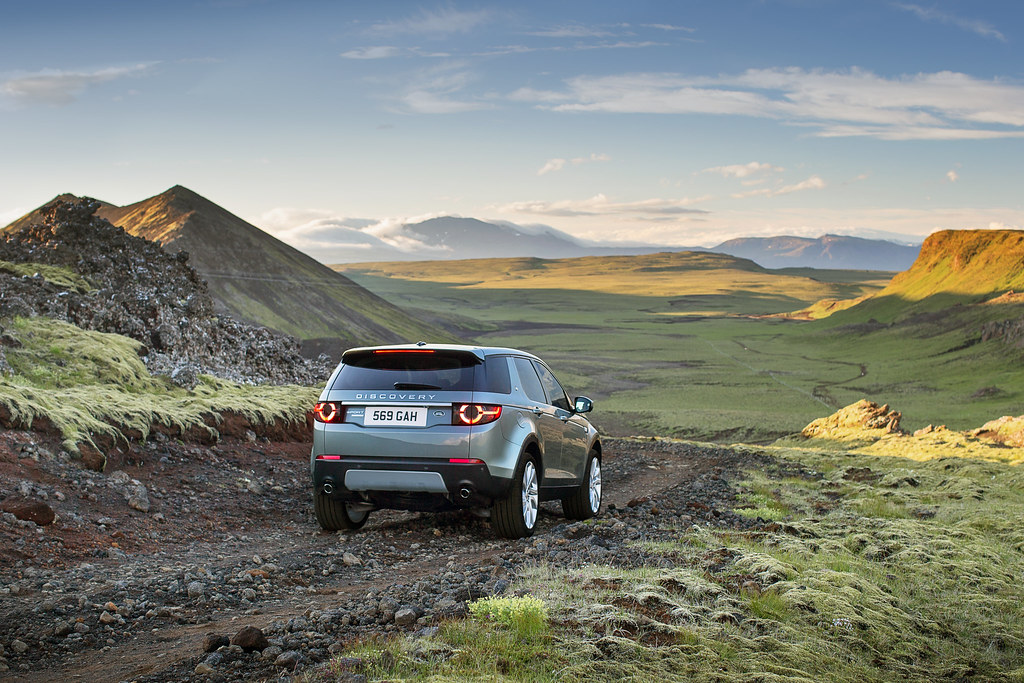
14. **Land Rover Discovery**Moving decisively into the bustling era of the 1990s, the Land Rover Discovery marked a significant step forward in offering a compelling blend of royal comfort and formidable off-road capability. This model, representing a new generation of Land Rover, joined the royal garage, providing a notably more refined driving experience than its more utilitarian Series siblings. It emphatically maintained the legendary go-anywhere ability that the family had come to value so highly in their Land Rovers.
The Discovery quickly transitioned from a new entrant to a beloved staple for the younger generation of royals. Prince William and Prince Harry were frequently photographed in these versatile SUVs during their formative years, illustrating its prominent role as a robust, reliable, and decidedly family-friendly vehicle. It wasn’t just a car; it was a silent, often muddy, backdrop to countless royal childhood adventures, from sporting events to invigorating countryside outings.
Naturally, the royal Discoveries, true to form, weren’t just standard off-the-shelf vehicles. They featured thoughtfully upgraded interiors with significantly better sound insulation, creating a much quieter, more serene cabin environment, and boasted notably more comfortable seats than their standard counterparts. For extended royal journeys, often involving young children, these enhancements made a considerable difference, transforming the vehicle into a sanctuary of calm.
And, as is always the case with vehicles intended for royal use, security was absolutely paramount. For Discoveries specifically designated for official engagements, comprehensive security modifications were meticulously integrated, including the addition of bulletproof glass and thoroughly reinforced doors. These unseen, yet crucial, protections ensured that while the family enjoyed the vehicle’s comfort and capability, their safety remained utterly uncompromised.
Car Model Information: 2025 Honda Civic Sport
Sp: uk
Name: Land Rover Discovery
Caption: 2018 Land Rover Discovery
Manufacturer: Land Rover Ltd.,Jaguar Land Rover
Production: 1989–present
Class: Executive car,Sport utility vehicle
Layout: Front-engine, four-wheel-drive
Categories: All-wheel-drive vehicles, All Wikipedia articles written in British English, All articles lacking reliable references, All articles with unsourced statements, Articles lacking reliable references from December 2010
Summary: The Land Rover Discovery is a series of five or seven-seater family SUVs, produced under the Land Rover marque, from the British manufacturer Land Rover, and later Jaguar Land Rover. The series is currently in its fifth iteration (or generation, according to the manufacturer), the first of which was introduced in 1989, making the Discovery the first new model series since the launch of the 1970 Range Rover – on which it was based – and only the third new product line since the conception of the Land Rover (vehicle and brand) by Rover in 1948. The model is sometimes called influential, as one of the first to market a true off-road capable family car.
Although the Range Rover had originally been designed as an everyday four wheel drive car that could be used as both a utility vehicle and a family car, it had progressively moved upmarket through its life to evolve into a luxury vehicle sold at a much higher price point. The Discovery was intended to fulfill the role the Range Rover originally was intended for; a segment which was now dominated by Japanese rivals such as the Nissan Patrol, Mitsubishi Pajero and Toyota Land Cruiser. Although positioned below the Range Rover in the company’s line-up, the vehicle was both longer and higher, offered more room in the back, and optionally also more seats. Space utilization became more sophisticated in later generations, but the series keeps offering seats for seven occupants. Despite originally being sold as an affordable alternative to the Range Rover, the Discovery has also progressively moved upmarket through its successive generations to become a bonafide luxury SUV.
The second Discovery (1998) was called the Series II, and although it featured an extended rear overhang, it was otherwise an extensive facelift, which carried over the 100 in (2,540 mm) wheelbase frame and rigid, live front and rear axles derived from the original Range Rover.
The third generation – succeeding the Series II in 2004 – was either called the Discovery 3 or simply LR3 (in North America and the Middle East). This was a new ground up design, the first all-original design for the Discovery. Although it followed the 2002 third generation Range Rover, also switching to fully independent suspension, it still received a separate, but integrated body and frame (IBF) structure. The fourth generation, as of 2009 – like the series II, was again mainly an update of the new generation – marketed as the Discovery 4, or Land Rover LR4 for North American and Middle Eastern markets.
The fifth generation of the Discovery, introduced in 2017, no longer sports a numeric suffix. Unlike the previous two generations, it now benefits from a unitized body structure, making it lighter than its predecessor.
Get more information about: Land Rover Discovery
Buying a high-performing used car >>>
Brand: Land Rover Model: Discovery
Price: $26,923 Mileage: 1,460 mi.
Read more about: Forgotten ’60s Icons: Can You Name These Stars Only a True Boomer Remembers?
So, there you have it, fellow petrolheads. Our deep dive into the royal garages reveals a fascinating tapestry of automotive choices, from the ceremonial might of the Rolls-Royce Phantom VI that escorted a future Queen to her wedding, to the sophisticated armor of the Bentley Arnage and Mulsanne, blending bespoke luxury with formidable security. The uniquely functional Range Rover Landaulet, designed for maximum public connection, stands as a testament to purpose-built vehicles. And then, bringing it back to earth (or rather, off-road), the trusty Land Rover Series II, Series III, and the more refined Discovery have consistently served the British Royal Family with an unwavering dedication to utility, adventure, and getting the job done, no matter how dirty. It’s a collection that beautifully illustrates that whether for state grandeur or a quiet, personal drive across the sprawling estate, the British monarchy’s garage is a living museum, a vibrant testament to enduring British engineering, deeply personal preferences, and a surprisingly heartwarming connection to the machines that move them. These aren’t just cars; they’re chronicles on wheels, each with a tale as compelling and storied as the Crown itself, proving once and for all that even the most regal among us appreciate a good set of wheels with a bit of history, and a whole lot of character, under the hood.

